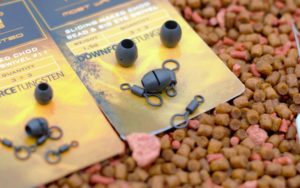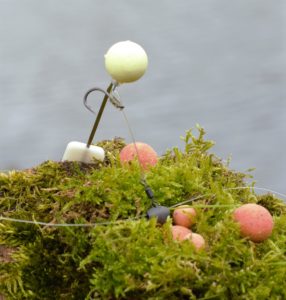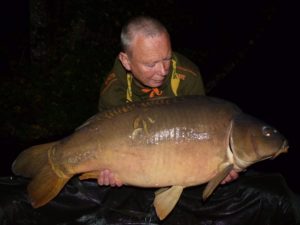With the spring season already here, the lakes around the country start to come to life. At this time, I am always on the phone to my friend Andrew Gardner to give me an update on his dives and to find out what is happening in and around the lake beds. Andy can provide a whole host of vital information which can aid my fishing and following a warm winter I will be particularly interested in the weed growth he has seen out in the lakes.
Weed growth will seriously affect how I plan my fishing both at home in England and abroad. The spread of the weed is very much influenced by the weather, for example this year has seen a relatively warm winter in the East of England where I live, with January being the only cold month and most of the lakes covered in ice for just a few weeks. This has meant that blanket weed has not really died back and will therefore probably be much in abundance this year so it is vital the angler understands how this effects the lake environment and the fish feeding there.

If you look more closely at blanket weed in water for example, it is so different in appearance when it is laying on the bottom of the lake from how it looks out of the water. Andy made me aware that on the bottom of the lake, blanket weed can best be described as a lawn. I asked him to show me this so I could get it into my head and fully understand the implications this lake bed surface would have on my rig choice. I also wanted to know if the weed drifts on the bottom with the undertow and if the blanket weed in shallow lakes behaves any differently to that found in gravel pits or silted lakes. I often see Anglers getting frustrated when casting a marker float or leading around picking up loads of weeds and I wonder if they ever think what it may look like under the surface.
It is better to try and plot where weed is at its lightest to present a bait effectively and know the fish will pick up your rig and you can then land it safely. Other weed plant life now starts to shoot with the stronger light penetrating, giving the angler more to think about regards presenting a bait and hopefully then catching a Carp. With rotten leaves still on the lake bed finding clear spots can be crucial but sometimes lack of time prevents you from looking for clean areas which will provide really good presentation of your rig.
When fish are feeding heavily even shoals of tiny roach will move any debris around your baited hook. Even active invertebrates like snails and mussels slowing moving along the bottom will have an effect but do we take enough notice of this?
I remember fishing Willow Lake on the Linch Hill Fishery Complex and fishing under a tree where the carp were much in evidence. This hive of activity caused a great stirring of the lake bed and this is a classic example of when I would use a lot of groundbait and finely chopped boilies and mini boilies to ensure fish were finding my bait even in the very weedy conditions. The carp in this situation were ripping up the bottom, the blanket weed and the leaves and they were grubbing about on the bottom to get every bit of food they could get hold off.

Another example of when this approach was successful for me would be when I caught the famous swirly at Lakelands in Essex. At this time, I was fishing the shallowest part of the lake, in late May, and it was thick with weed. So I waded into the lake to get a better look at my spot whilst trying not to spook the fish. I saw a number of large carp in the heavily weeded area. I found a spot where the weed was lighter and a channel which the carp were using and I put out 60 balls of ground bait in the morning on arrival plus mini boilies. sweetcorn and hemp. During the day, the area was smashed up by carp, roach and tench. But I did not cast a rig until the early evening. As soon as night time arrived I had swirly which taught me a lot and I also caught a few thirties that night as well. The next couple of weeks after this I carried on fishing using this same method and ended up with two other famous forties, Braveheart and Single Scale. Rig wise I wanted to be confident that I could fish in these difficult areas with confidence but be able to land fish without losing them.
So, I have used the knowledge gained in these experiences to help develop my present day fishing. For instance I now use chods in the spring and I continue to love fishing in these weedy conditions which many anglers are still afraid of. What I would say to Anglers who are considering fishing in these conditions is that tactically don’t just consider casting into weed and thinking you will get a pick up but understand what the bottom is like so you can use it to your advantage. Use other coarse fish to stir up the bed and carefully think about the rig you will use.

The chod is a fantastic rig but don’t be afraid to use different lengths of up to four inches. and it’s amazing the takes I have had fishing chods in weed at this length and I even feel more confident of landing them on this length. When I feed and I know the weed is going to be battered by the fish, then I will shorten the length even going to the shortest.
I also like to adjust the way my rig sits in the weed and have used the PB new chod beads which come in a couple of sizes. These now make presentation even better when fished on the naked chod. With the lightest chod beads from PB products I know the rig sits perfectly on weed without sinking. The heaviest ones I tend to use more when there is a lot of debris is around. Again, balance the chod with the right size hook. Where weed is heavier I tend to fish size 6 and smaller when chod or weed is at its lightest.
So, don’t just think chod but think of the situation that is in front of you think what is happening under the surface in late spring and early summer. More thought will certainly put more fish on the bank for you.
Keith Williams

